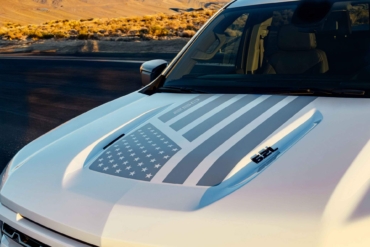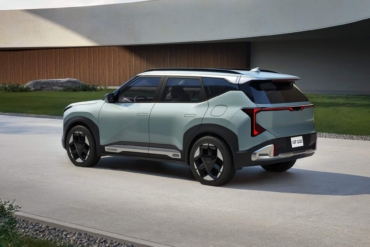Siemens and ConnectDER bring cheap EV charging to the masses with super-simple installation.
ConnectDER makes a widget that taps directly into your home’s electrical meter and can be installed in seconds without the need to splurge for electrical service upgrades. Their partnership with Siemens promises an all-in-one charging solution for EVs that installs in less than 15 minutes.
ConnectDER is a Virginia-based company that has developed a solution so easy that all of us EV engineers are kicking ourselves for not thinking of it first. The ConnectDER collar sits between your home’s energy meter and the meter socket outside your home.
The collar provides a new tap into your home’s electric service line that doesn’t require going through your breaker panel. You can then plug almost anything into it — the first adopters have been solar installers. ConnectDER has been at this for nearly a decade with thousands of units already in service.

An obvious use case for ConnectDER is EV charging. Siemens, one of the biggest names in EV equipment, is an ideal partner. With the ConnectDER solution, Siemens is poised to deliver one of the simplest and most economical EV charging solutions to date.
Stop Calling It a Charger
The average home EV “charger” isn’t actually a charger. The actual charger is already built into your electric car.
The home EV “charger” is actually an EVSE or “Electric Vehicle Supply Equipment.” An EVSE is really just a smart switch that connects the car to the grid.
For a typical EVSE installation, you’ll need a 240V line or outlet run to your garage or driveway. In some cases, this can require an expensive panel upgrade — my friend was recently quoted more than $1,400 for the job.
It’s no surprise then that ConnectDER estimates its solution will save homeowners 60-80% of the installation cost.

Home “Chargers”: Why So Expensive?
All electric vehicles are equipped with onboard chargers that can take typical 120V or 240V AC. So, why all this expensive equipment, you ask? Couldn’t you just hook up an extension cord to your car?
You could! But you’d have to bypass hundreds of lines of code and safety switches to do it. The reason for an EVSE is safety — there are circuit breakers and sensors in-line to prevent electrocution.
When it’s pouring rain and you’re standing in a puddle, soaking wet and holding a high voltage cable, you have nothing to fear. You can thank the IEEE, SAE, and UL for making a safe — if expensive and complicated — solution.
Breaking Down Barriers to Adoption
The home charger market is expected to exceed $16 billion in 2026, but many older homes or apartments are being left behind in the EV revolution. If you have an older home, you’ll likely need a full panel upgrade, which can cost upward of $3,000. That’s the cost before you spend $800-1,200 for an EVSE.
A ConnectDER option could be much cheaper, though exactly how much hasn’t been disclosed. PV Magazine quotes an estimate of $400 for the ConnectDER collar. That collar will attach to a typical Siemens EVSE, which costs around $1,100.
With economies of scale at work, we’d expect to see the cost of the system drop below the combined $1,500 threshold in the not-so-distant future.
This still won’t work for every homeowner — if your driveway and your electric meter are on opposite sides of your home, it’s just too far. On the other hand, it’s not unreasonable to have 20 feet of cable between the meter and your EVSE location.

I’m In! How Do I Buy One?
In theory, you can buy the ConnectDER collar today in certain areas, but you probably can’t install it yourself. Unfortunately, the product has to be approved for use on a state-by-state basis, and it can even differ for individual electric utilities. You’ll probably still need a licensed electrician to install it.
With Siemens propelling the EV application of ConnectDER, we hope to see the approval process accelerate. We’re dreaming of the day we see the EV kit on the shelf of our local hardware store.







